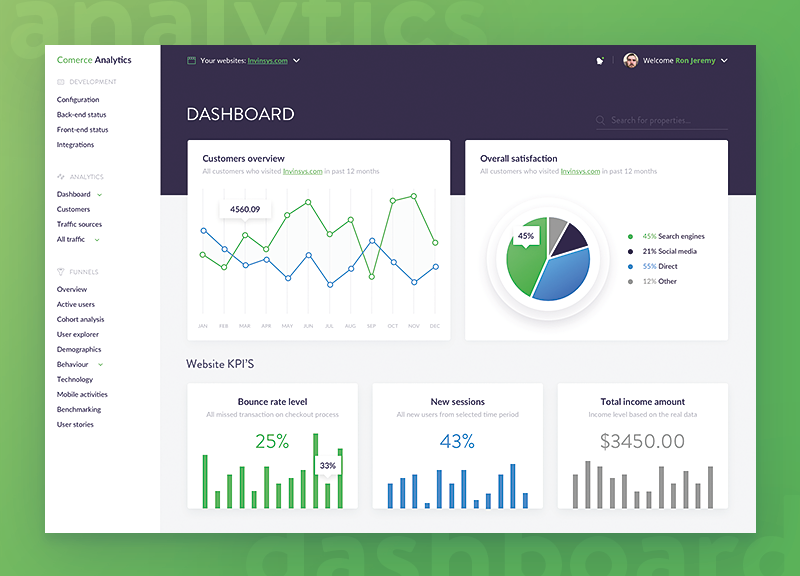
What is Google Planning in May 2021?
Last May 2020 Google announced that page experience signals would be featured more and more in Google Search ranking algorithm (the method it decides how to rank a website by it’s content)
These new signals would measure how users perceive the experience of interacting with a web page and contribute to Google’s ongoing work to ensure people get the most helpful and enjoyable experiences from the web.
Throughout 2020 we’ve seen a median 70% increase in the number of users engaging with tools such as Lighthouse and PageSpeed Insights, and many site owners using Search Console’s Core Web Vitals report to identify opportunities for improvement. At Simply IT we have had an eye on Google’s Search Console Core Web Vitals also for all our client’s websites.
Then towards the end of 2020 Google announced that in addition to the improved User Experience criteria it would roll-out something called the ‘Core Web Vitals’ metrics in May 2021.
User Experience
1. The first four elements of UX-Experience Signal
First let’s just list the first four elements Google has started to use to measure good user experience (sometimes called the ‘XU-experience Signal’):
The ‘page experience’ signal has been using the following signals for a few months now:
- Mobile-friendliness (good ‘responsive’ pages that appear well on a mobile smartphone and tablet)
- Safe-browsing (The page doesn’t contain any misleading content or malicious software).
- HTTPS-security (SSL certification denoted by the padlock you see on your browser beside the URL of the website you are viewing).
- Intrusive interstitial guidelines (pop-ups that do not provide any new content that you cannot already see on a page).
AMP (Accelerated Mobile Pages)
Before we move on to look at the latest three Core Web Vitals it should be noted that Google announced that to encourage mobile browsing it would also prioritize AMP content. AMP stands for Accelerated Mobile Pages. A stripped down version of webpages that allow fast mobile browsing.
Specifically, Google announced that for non-AMP content to become eligible to appear in the mobile Top Stories feature in it’s Search Engine its new algorithm would out in May 2021. Any page that meets the Google News content policies will be eligible and Google said it will prioritize pages with great page experience, whether implemented using AMP or any other web technology, as they rank the results.

2. The Three Google Core Web Vitals
Googles ‘Core’ Web Vitals were first introduced in 2020 and are designed to measure how users experience three main things: the speed, responsiveness, and visual stability of a page.
Specifically, these are defined by Google as the three main ‘Core Web Vitals’ at this time:
- Largest Contentful Paint (LCP)
- First Input Delay (FID)
- Cumulative Layout Shift (CLS)
Towards the end of 2020 Google announced that these three signals would be part of a big roll-out in May 2021 of their algorithm and encouraged website developers to modify their websites accordingly.

Largest Contentful Paint (LCP):
The time it takes for a page’s main content to load. An ideal LCP measurement is 2.5 seconds or faster.
First Input Delay (FID):
The time it takes for a page to become interactive. An ideal measurement is less than 100 ms.
Cumulative Layout Shift (CLS):
The amount of unexpected layout ‘shift’ of visual page content. This is what you see when elements of the page are updated and other elements (eg text) are shifted to make space for the new element, particularly when a page loads. An ideal measurement is less than 0.1.
In addition to the timing updates described above, Google announced that they would test a visual indicator that highlights pages in search results that have great user page-experience.

LATEST UPDATE (May 2021)

So we will see regular updates, maybe on a monthly basis that start to ramp up the focus on these Core Web Vitals.
Then next year in 2022 they will focus on new metrics in their Algorithm roll-outs.
Conclusion

At Simply IT we are always updating our website health audit tools and our Search Engine Optimisation practices & reports. We also are constantly utilising tools to integrate the core web vitals into the website experiences we design and create. Why? Well, to be compatible with these Google aims and updates, helps our client’s websites with our Search Engine Optimisations to higher rankings on Google Search Engine.




